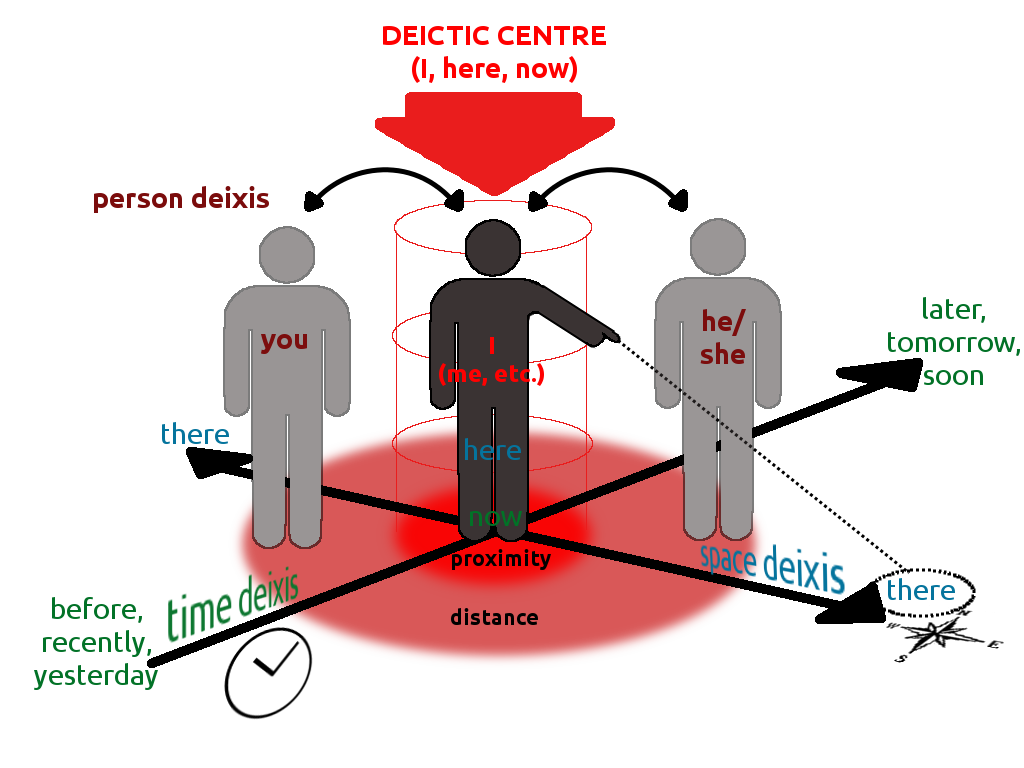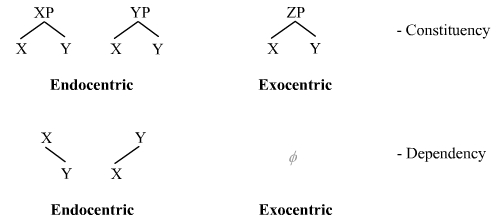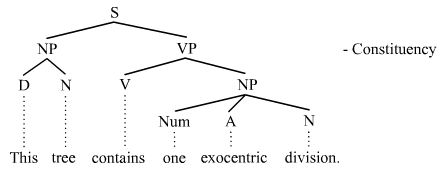|
Ogea Language
Ogea or Erima is a Papuan language spoken by approximately 2210 people living in an area 18 kilometers south of the town of Madang, in the Madang Province of Papua New Guinea. Language characteristics Phonemically, Ogea has a 15 vowel system with 17 consonants. Syntactically, Ogea is a Subject-Object-Verb (SOV) language, with adjectives following nouns, and deictics following adjectives—the reverse of English. Morphologically, Ogea is a highly inflected, suffixing language, with most of the complexity occurring with verbs. There are over 100 basic verbal suffixes, the number of which is significantly multiplied by allomorphic variants. Ogea sentences are often composed of chains of verbs, with suffixes indicating sentence medial versus final positions. Ogea verbs encode inter-clausal temporality (temporal succession—one action occurs following another—and temporal overlap—actions occur simultaneously). They also encode switch reference. Switch reference indicates w ... [...More Info...] [...Related Items...] OR: [Wikipedia] [Google] [Baidu] |
Papua New Guinea
Papua New Guinea (abbreviated PNG; , ; tpi, Papua Niugini; ho, Papua Niu Gini), officially the Independent State of Papua New Guinea ( tpi, Independen Stet bilong Papua Niugini; ho, Independen Stet bilong Papua Niu Gini), is a country in Oceania that comprises the eastern half of the island of New Guinea and its offshore islands in Melanesia (a region of the southwestern Pacific Ocean north of Australia). Its capital, located along its southeastern coast, is Port Moresby. The country is the world's third largest island country, with an area of . At the national level, after being ruled by three external powers since 1884, including nearly 60 years of Australian administration starting during World War I, Papua New Guinea established its sovereignty in 1975. It became an independent Commonwealth realm in 1975 with Elizabeth II as its queen. It also became a member of the Commonwealth of Nations in its own right. There are 839 known languages of Papua New Guinea, one of ... [...More Info...] [...Related Items...] OR: [Wikipedia] [Google] [Baidu] |
Deictic
In linguistics, deixis (, ) is the use of general words and phrases to refer to a specific time, place, or person in context, e.g., the words ''tomorrow'', ''there'', and ''they''. Words are deictic if their semantic meaning is fixed but their denoted meaning varies depending on time and/or place. Words or phrases that require contextual information to be fully understood—for example, English pronouns—are deictic. Deixis is closely related to anaphora. Although this article deals primarily with deixis in spoken language, the concept is sometimes applied to written language, gestures, and communication media as well. In linguistic anthropology, deixis is treated as a particular subclass of the more general semiotic phenomenon of indexicality, a sign "pointing to" some aspect of its context of occurrence. Although this article draws examples primarily from English, deixis is believed to be a feature (to some degree) of all natural languages.Lyons, John (1977) "Deixis, space and ... [...More Info...] [...Related Items...] OR: [Wikipedia] [Google] [Baidu] |
Grammatical Tense
In grammar, tense is a grammatical category, category that expresses time reference. Tenses are usually manifested by the use of specific forms of verbs, particularly in their grammatical conjugation, conjugation patterns. The main tenses found in many languages include the past tense, past, present tense, present, and future tense, future. Some languages have only two distinct tenses, such as past and nonpast, or future and Nonfuture tense, nonfuture. There are also tenseless languages, like most of the Varieties of Chinese, Chinese languages, though they can possess a future and Nonfuture tense, nonfuture system typical of Sino-Tibetan languages. In recent work Maria Bittner and Judith Tonhauser have described the different ways in which tenseless languages nonetheless mark time. On the other hand, some languages make finer tense distinctions, such as remote vs recent past, or near vs remote future. Tenses generally express time relative to the TUTT (linguistics), moment of s ... [...More Info...] [...Related Items...] OR: [Wikipedia] [Google] [Baidu] |
Exocentric
In theoretical linguistics, a distinction is made between endocentric and exocentric constructions. A grammatical construction (for instance, a phrase or compound) is said to be ''endocentric'' if it fulfils the same linguistic function as one of its parts, and ''exocentric'' if it does not. The distinction reaches back at least to Bloomfield's work of the 1930s, who based it on terms by Pāṇini and Patañjali in Sanskrit grammar. Such a distinction is possible only in phrase structure grammars (constituency grammars), since in dependency grammars all constructions are necessarily endocentric. Endocentric construction An endocentric construction consists of an obligatory head and one or more dependents, whose presence serves to modify the meaning of the head. For example: # NP_ A_big.html"_;"title="sub>NP_[A_big">sub>NP_[A_big[N_house.html" ;"title="sub>A_big.html" ;"title="sub>NP [A big">sub>NP [A big[N house">sub>A_big.html" ;"title="sub>NP [A big">sub>NP [A big[N house #[VP ... [...More Info...] [...Related Items...] OR: [Wikipedia] [Google] [Baidu] |
Endocentric
In theoretical linguistics, a distinction is made between endocentric and exocentric constructions. A grammatical construction (for instance, a phrase or compound) is said to be ''endocentric'' if it fulfils the same linguistic function as one of its parts, and ''exocentric'' if it does not. The distinction reaches back at least to Bloomfield's work of the 1930s, who based it on terms by Pāṇini and Patañjali in Sanskrit grammar. Such a distinction is possible only in phrase structure grammars (constituency grammars), since in dependency grammars all constructions are necessarily endocentric. Endocentric construction An endocentric construction consists of an obligatory head and one or more dependents, whose presence serves to modify the meaning of the head. For example: # NP_ A_big.html"_;"title="sub>NP_[A_big">sub>NP_[A_big[N_house.html" ;"title="sub>A_big.html" ;"title="sub>NP [A big">sub>NP [A big[N house">sub>A_big.html" ;"title="sub>NP [A big">sub>NP [A big[N house #[VP ... [...More Info...] [...Related Items...] OR: [Wikipedia] [Google] [Baidu] |
Taxonomic Classification
In biology, taxonomy () is the scientific study of naming, defining ( circumscribing) and classifying groups of biological organisms based on shared characteristics. Organisms are grouped into taxa (singular: taxon) and these groups are given a taxonomic rank; groups of a given rank can be aggregated to form a more inclusive group of higher rank, thus creating a taxonomic hierarchy. The principal ranks in modern use are domain, kingdom, phylum (''division'' is sometimes used in botany in place of ''phylum''), class, order, family, genus, and species. The Swedish botanist Carl Linnaeus is regarded as the founder of the current system of taxonomy, as he developed a ranked system known as Linnaean taxonomy for categorizing organisms and binomial nomenclature for naming organisms. With advances in the theory, data and analytical technology of biological systematics, the Linnaean system has transformed into a system of modern biological classification intended to reflect the evolut ... [...More Info...] [...Related Items...] OR: [Wikipedia] [Google] [Baidu] |
Clause
In language, a clause is a constituent that comprises a semantic predicand (expressed or not) and a semantic predicate. A typical clause consists of a subject and a syntactic predicate, the latter typically a verb phrase composed of a verb with any objects and other modifiers. However, the subject is sometimes unvoiced if it is retrievable from context, especially in null-subject language but also in other languages, including English instances of the imperative mood. A complete simple sentence includes a single clause with a finite verb. Complex sentences contain multiple clauses including at least one ''independent clause'' (meaning, a clause that can stand alone as a simple sentence) coordinated either with at least one dependent clause (also called an embedded clause) or with one or more independent clauses. Two major distinctions A primary division for the discussion of clauses is the distinction between independent clauses and dependent clauses. An independent clause can s ... [...More Info...] [...Related Items...] OR: [Wikipedia] [Google] [Baidu] |
Switch Reference
In linguistics, switch-reference (SR) describes any clause-level morpheme that signals whether certain prominent arguments in 'adjacent' clauses are coreferential. In most cases, it marks whether the subject of the verb in one clause is coreferent with that of the previous clause, or of a subordinate clause to the matrix (main) clause that is dominating it. Meanings of switch-reference The basic distinction made by a switch-reference system is whether the following clause has the same subject (SS) or a different subject (DS). That is known as canonical switch-reference. For purposes of switch-reference, subject is defined as it is for languages with a nominative–accusative alignment: a subject is the sole argument of an intransitive clause or the agent of a transitive one. It holds even in languages with a high degree of ergativity. The Washo language of California and Nevada exhibits a switch-reference system. When the subject of one verb is the same as the subject of the ... [...More Info...] [...Related Items...] OR: [Wikipedia] [Google] [Baidu] |
Code
In communications and information processing, code is a system of rules to convert information—such as a letter, word, sound, image, or gesture—into another form, sometimes shortened or secret, for communication through a communication channel or storage in a storage medium. An early example is an invention of language, which enabled a person, through speech, to communicate what they thought, saw, heard, or felt to others. But speech limits the range of communication to the distance a voice can carry and limits the audience to those present when the speech is uttered. The invention of writing, which converted spoken language into visual symbols, extended the range of communication across space and time. The process of encoding converts information from a source into symbols for communication or storage. Decoding is the reverse process, converting code symbols back into a form that the recipient understands, such as English or/and Spanish. One reason for coding is to ... [...More Info...] [...Related Items...] OR: [Wikipedia] [Google] [Baidu] |
Sentences
''The Four Books of Sentences'' (''Libri Quattuor Sententiarum'') is a book of theology written by Peter Lombard in the 12th century. It is a systematic compilation of theology, written around 1150; it derives its name from the ''sententiae'' or authoritative statements on biblical passages that it gathered together. Origin and characteristics The ''Book of Sentences'' had its precursor in the glosses (an explanation or interpretation of a text, such as, e.g. the ''Corpus Iuris Civilis'' or biblical) by the masters who lectured using Saint Jerome's Latin translation of the Bible (the Vulgate). A gloss might concern syntax or grammar, or it might be on some difficult point of doctrine. These glosses, however, were not continuous, rather being placed between the lines or in the margins of the biblical text itself. Lombard went a step further, collecting texts from various sources (such as Scripture, Augustine of Hippo, and other Church Fathers) and compiling them into one coher ... [...More Info...] [...Related Items...] OR: [Wikipedia] [Google] [Baidu] |
Allomorph
In linguistics, an allomorph is a variant phonetic form of a morpheme, or, a unit of meaning that varies in sound and spelling without changing the meaning. The term ''allomorph'' describes the realization of phonological variations for a specific morpheme. The different allomorphs that a morpheme can become are governed by morphophonemic rules. These phonological rules determine what phonetic form, or specific pronunciation, a morpheme will take based on the phonological or morphological context in which they appear. In English English has several morphemes that vary in sound but not in meaning, such as past tense morphemes, plural morphemes, and negative morphemes. Past tense allomorphs For example, an English past tense morpheme is ''-ed'', which occurs in several allomorphs depending on its phonological environment by assimilating the voicing of the previous segment or the insertion of a schwa after an alveolar stop: *as or in verbs whose stem ends with the alveolar st ... [...More Info...] [...Related Items...] OR: [Wikipedia] [Google] [Baidu] |
Verb
A verb () is a word (part of speech) that in syntax generally conveys an action (''bring'', ''read'', ''walk'', ''run'', ''learn''), an occurrence (''happen'', ''become''), or a state of being (''be'', ''exist'', ''stand''). In the usual description of English, the basic form, with or without the particle ''to'', is the infinitive. In many languages, verbs are inflected (modified in form) to encode tense, aspect, mood, and voice. A verb may also agree with the person, gender or number of some of its arguments, such as its subject, or object. Verbs have tenses: present, to indicate that an action is being carried out; past, to indicate that an action has been done; future, to indicate that an action will be done. For some examples: * I ''washed'' the car yesterday. * The dog ''ate'' my homework. * John ''studies'' English and French. * Lucy ''enjoys'' listening to music. *Barack Obama ''became'' the President of the United States in 2009. ''(occurrence)'' * Mike Trout ''is ... [...More Info...] [...Related Items...] OR: [Wikipedia] [Google] [Baidu] |





